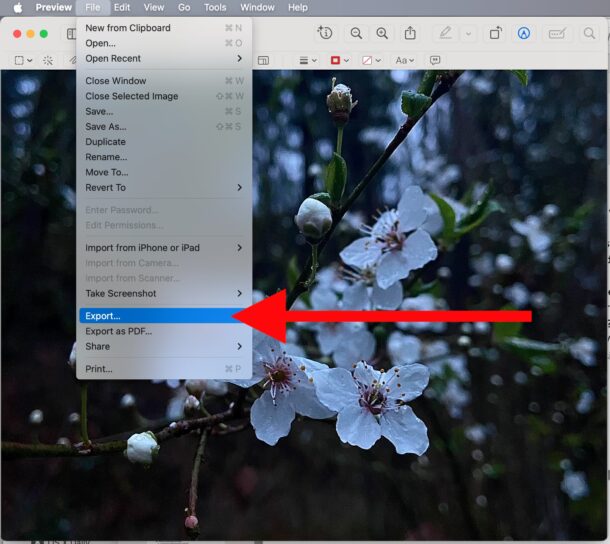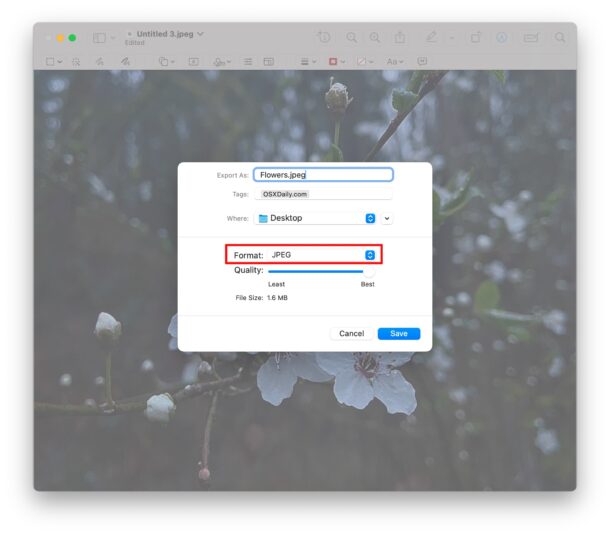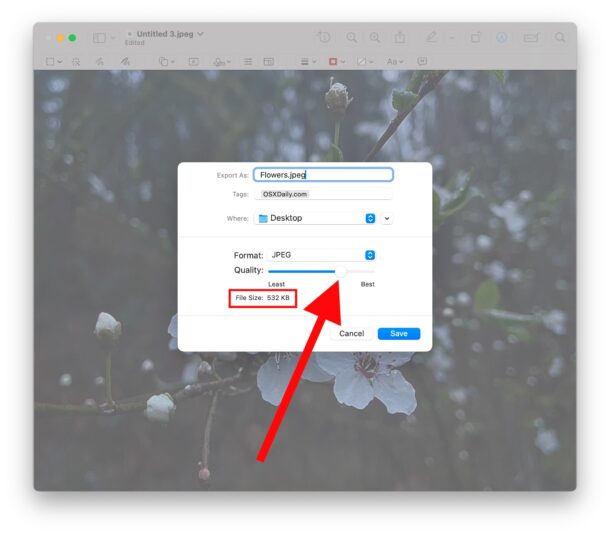2 Easy Ways to Compress Images on Mac

Compressing images can be a necessary task for many Mac users, whether they’re getting ready to post an image to the web, share a photo through email or messages, or they’re simply trying to compress and reduce the file size of an image for any other purpose.
There are several ways to compress images on the Mac, thereby reducing the image file size, and we’re going to show you two of the easiest ways to get this done in MacOS. And best of all, these two approaches can be stacked together, providing significant image compression that can dramatically reduce the size of an image file. Let’s check it out.
Important note about image compression
Compressing images will effectively reduce the file size, often dramatically so, but it does so at the cost of image quality. The more compression you have, the lower the image quality will be. This is something to keep in mind as you engage in image compression, as finding the proper balance is essential.
There are some other image compression options available too that have no obvious quality loss but will still effectively reduce image file size, like removing EXIF and metadata which can reduce file size and we cover here in this article, and there are also mostly lossless image compression options like by converting images to webp, but it’s important to remember that webp is not yet universally adopted or supported.
How to Compress Images on Mac with Preview
Every version of MacOS includes the Preview app, which is a fantastic but often overlooked image editor. Preview also offers built-in image compression functionality, and it’s super easy to use. With
- Open the image you wish to compress into the Preview app on the Mac (Preview is the default image editor, so double-clicking the photo or image should open Preview directly)
- Pull down the “File” menu and choose “Export”
- Set the ‘Format’ to “JPEG”
- Now pay attention to the “Quality” slider, this is where the majority of serious compression of the image will happen, and generally speaking the sweet spot is somewhere in the 75%-95% Quality range. With about 80% compression you can easily take a 5MB image file and turn it into an 800kb image file that looks virtually identical to the majority of users!
- When satisfied with your compression of the image, click on “Save” to save the image to the destination of your choice



In the example used here, an uncompressed 8 MB image file of a flower became 1.6 MB simply by converting it to JPEG, and then reduced down to 532 KB by using the image compression slider.

For even better image compression results, take the image you just saved a compressed version of from Preview, and then apply it to the next trick of using ImageOptim.
Compress Images Losslessly with ImageOptim
ImageOptim is a fantastic free tool available for the Mac that offers various image compression algorithms that can drastically reduce image file size without sacrificing image quality. Part of how Image Optim works is by stripping away meta data and EXIF data from image files too, which is a nice bonus.
- Download ImageOptim for free to your Mac if you don’t have it already (get it from the developer here)
- Open ImageOptim on the Mac, then drag and drop the image(s) you wish to compress into the ImageOptim window
- Let ImageOptim complete the image compression, the app will inform you of the exact file size savings achieved by its image compression algorithms

ImageOptim works quickly too with most image file formats, though you’ll find compressing something like a JPEG file is much quicker than compressing a PNG.
For the best compression results, ImageOptim works best when combined with other image compression approaches, like what we outlined earlier in this article of converting an image to JPEG, and then further refining the image compression process to reduce the file size even further. We have long been fans of this app, and it has been around for a while, continuing to offer a no-frills, free, and super easy image optimization method for Mac users.
Following the original example, an 8 MB image of a flower became a 488 KB image of the same flower, at a quality that would look the same visually to the majority of people, and should be imperceptible unless you’re zooming in or looking at the image carefully in a photo editor app, like Photoshop or Pixelmator.
Image compression can be necessary and desirable, especially if you’re sharing your images on the web or through email, since the photos will be much reduced in file size and make them load faster or transfer faster.
What tools or apps do you use to compress images? Do you use Preview on the Mac for image compression by exporting to a different image file format, like JPEG, and adjusting the quality accordingly? Do use another approach? Share your experiences and thoughts in the comments!


I think the real secret is to make the image the size and pixel depth needed for how it is to be reproduced. With the exception being for bit images which can be as high resolution as possible. Then use a lossless compression such as tiffs with LZW compression. Or save a completed document in the format needed for reproduction such as pdf. Apps such as QuarkXPress, inDesign, etc, will automatically optimise images when they are saved for output, dropping unnecessary resolution.
Convert to jpg (low, normal, high quality) using sips and AppleScript
https://github.com/b0gdanw/AppleScripts/blob/master/ConvertToJPG.scpt